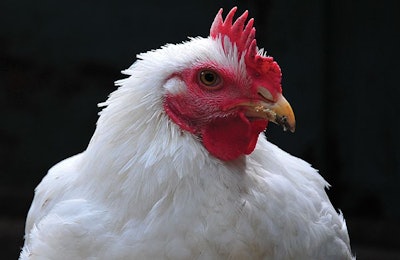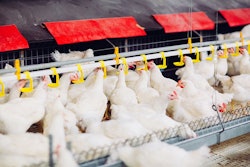
Over the next decade, overall global meat production is projected by the Organization for Economic Cooperation and Development (OECD) and Food and Agriculture Organization (FAO) to expand by nearly 40 million metric tons, reaching 366 million metric tons by 2029 – 80% driven by developing nations. Of this total, poultry will remain a main contributor, with world poultry meat production at more than 125 million metric tons averaged from the period 2017-19, rising to nearly 146 million metric tons in 2029. With diets continuing to change, especially in developing countries, consumption is also expected to rise during the same time period.
Poultry meat is forecast at nearly 146 million metric tons in 2029, which is up from nearly 125 million metric tons over the base period average of 2017-19. Poultry meat continues as the primary driver of meat production growth globally thanks to a combination of lower production costs relative to other meats, a shorter production cycle, high feed-conversion ratios and lower product prices in many regions.
Comparatively, pig meat production – the second-largest contributor— is forecast at nearly 127.5 million metric tons by 2029, up from an average of nearly 117 million metric tons from the 2017-19 base period. Improvements in genetics, animal health and management practices also continue to benefit the industry and consumers alike, in the end.
While slightly growing, poultry production will slow overall in the next decade compared to the previous decade. According to OECD-FAO, the annual growth rate from 2020-29 will represent an average of 1.1%, compared to 2.7% over the same period of 2010-19. In spite of slowing growth, poultry numbers are expected to increase 1.5% from 2020-29.
Developing regions drive poultry production
In the short term, poultry producers will benefit from favorable meat-feed ratios and increased import demand worldwide, according to FAO, largely supported by developing regions as developed regions grow their numbers in terms of productivity per animal. Asia will account for a large majority of poultry meat production in 2019 and 2020, according to FAO. Traditional regions like North America will also remain large contributors, followed by countries in South America and Europe.
Update: U.S, Brazil, Latin America
Looking both short- and longer-term, Brazil, China, the EU and U.S. are still expected to account for nearly 60% of global meat output by 2029.
In the U.S., poultry meat production is expected by the U.S. Department of Agriculture (USDA) at more than 50 billion pounds, including both turkey and chicken, rising slowly to more than 51 billion pounds by 2021.
Brazil will continue to be a major poultry producing country as well, benefiting from their natural resources, including feed availability, technology increasing productivity and some devaluation of their currency, according to OECD-FAO. USDA projects production to drop negligibly in the country from 13.96 million metric tons in 2019 to nearly 13.83 million metric tons by the end of 2020. Although Brazil will remain the largest contributor of poultry meat over next decade within Latin America, the country is set to increase its production nearly 9.4% between the average period of 2017-19 and 2029, compared with nearly 30% in other developing countries in the region – to be watched.
Download more poultry market data:
Brazil poultry meat production and consumption trend 2016-20
Global meat production by species avg. 2017-19 vs. 2029
Global poultry meat production growth avg. 2010-19 vs. 2020-29
Poultry meat production by region 2019-20
Poultry production in Latin America and the Caribbean avg. 2017-19 vs. 2029
US quarterly poultry product production 2019-21
World poultry meat production and consumption projections to 2028
















